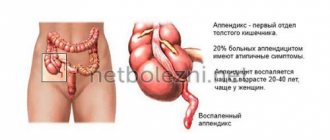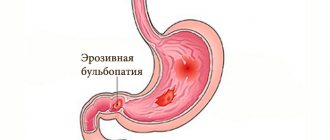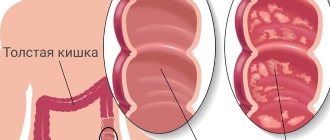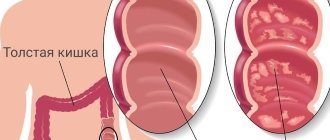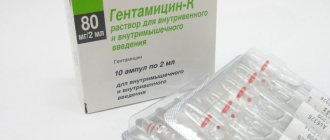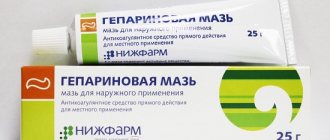Gastritis is an inflammation of the mucous tissue of the stomach walls. There are two types of this disease: gastritis with low and high acidity of gastric juice. It is important to note that, depending on the intensity and duration of the influencing factors, acute gastritis , which occurs with certain inflammatory changes, and chronic gastritis . Each type has its own characteristics and differences, accompanied by progressive factors in the mucous membrane.
Acute gastritis
The acute form of the disease occurs as a result of a number of reasons.
They can have a different basis - chemical and mechanical, thermal and biological. The surface epithelium is damaged, the glandular structure of the gastric mucosa is destroyed. These changes are distinguished by dystrophic-necrobiotic specificity. They lead to the appearance of inflammatory foci. Inflammation of the surface epithelium does not have serious consequences. In medicine, there are many ways to cure this type of gastritis. Much more serious is the process in which changes affect the entire thickness of the mucous layer, interstitial tissue, and sometimes even the muscular structures of the walls of the stomach. In such an advanced case, treatment is delayed for a long time and requires great dedication and commitment from the person.
General information
Catarrhal gastritis is a dystrophic-inflammatory lesion of the gastric mucosa that occurs when it is exposed to aggressive factors. In the United States, about 2 million people annually visit a physician for catarrhal gastritis. In Russia, every second resident suffered at least one episode of catarrhal gastritis. Among all diseases in the field of gastroenterology, catarrhal gastritis is the most common pathology. The onset of catarrhal gastritis is usually sudden, most often against the background of nutritional errors; the further course can be quite severe. The insidiousness of catarrhal gastritis lies in the fact that even superficial damage to the mucous membrane can lead to the formation of ulcers and erosions, and gastric bleeding.
Catarrhal gastritis
Symptoms of acute gastritis
Signs of acute gastritis do not take long to appear. Just a few hours of exposure to one of the above factors is enough. Certain signs indicate this form of the disease; treatment is prescribed after examination and taking into account these signs. The patient experiences heaviness and fullness in the epigastric region. Nausea and weakness appear, and dizziness is possible. Vomiting and diarrhea are possible. The skin becomes pale, and the tongue becomes covered with a grayish-whitish coating. There is either strong salivation or, conversely, increased dry mouth.
You should not delay visiting a doctor if all these signs are observed; treatment will give a good result only if you consult a specialist in a timely manner. Examination, tests, and additional examinations using modern equipment will help you understand what type of disease the patient has and how to treat it. After all, some symptoms of the disease are similar to signs of other diseases and infections. Only bacteriological and serological studies will present the doctor with the true picture and help him make an informed decision on how to treat gastritis.
Any delay or frivolous attitude towards one’s own well-being can have dire consequences. The patient will develop chronic gastritis, the treatment of which will be long and difficult.
Acute gastritis in many cases manifests itself as acute gastroenteritis or acute gastroenterocolitis. This disease can be catarrhal, corrosive and phlegmonous.
Symptoms
A distinctive feature of catarrhal gastritis is the sudden onset of pain symptoms. The pain is always intense and is accompanied by additional signs of disorders of the digestive system.
In severe cases of the disease, the patient may experience intoxication of the body. Pain syndrome occurs several hours after exposure to the provoking factor.
Other symptoms:
- bad breath;
Inflammation of the gastric mucosa. - attacks of nausea;
- debilitating vomiting;
- cramps in the calf muscles;
- yellow or white coating on the tongue;
- increased body temperature;
- painful bloating;
- signs of tachycardia;
- arterial hypotension;
- pale skin;
- bile or mucus in vomit;
- vomiting of undigested food particles;
- tremor of the limbs.
First signs
The first signs of catarrhal gastritis appear within a few hours after exposure to an irritating factor. The patient begins to feel heaviness in the digestive organs, nausea and general malaise. Gradually, the symptoms of the disease intensify. These symptoms include pain, increased salivation, and dizziness. At the peak of the disease, diarrhea appears.
The further clinical picture of the patient’s health depends on the timeliness of therapy and the individual characteristics of the body.
Catarrhal gastritis
The most common is catarrhal gastritis. It also has another name - ordinary. The group of sick people includes those who eat poorly, get food poisoning, or take medications that are highly active and irritating. Acute forms quite often accompany this form of the disease; in this case, treatment is required urgently. The main cause of acute gastritis can be an infectious disease, a sudden disruption in metabolism, extensive breakdown of protein compounds due to burns and radiological injuries.
When treating catarrhal gastritis, it should be remembered that the surface epithelium is intensively infiltrated with leukocytes. Its dystrophy and necrobiotic lesions occur, and cases of inflammatory hyperemia are also common.
The appearance of catarrhal gastritis can be avoided. It is necessary to eat rationally and properly, observe the rules of hygiene, and treat your body more carefully. Treatment will not be required if you follow these simple rules.
Causes
The main cause of catarrhal gastritis is considered to be dietary errors. In the presence of pathologies of the digestive system, even a single intake of fatty, salty or spicy food can provoke an exacerbation attack. If your diet regularly contains harmful foods, the risk of disease increases significantly. The intensity of the pain syndrome will depend on the stage of progression of the inflammatory process.
Other reasons:
- excessive consumption of carbonated drinks;
- uncontrolled use of medications (narcotic analgesics, antibiotics, NSAIDs, steroid hormones);
- eating food that is too cold or hot;
- regular overeating;
- injuries to the mucous membranes of the digestive organs;
- the presence of too many spicy or fatty foods in the diet;
- damage to the body by infectious agents (Escherichia coli, Helicobacter pylori, staphylococci);
- alcohol abuse;
- consequences of toxic damage to the digestive system;
- complications of food allergies.
Corrosive gastritis
Corrosive types of disease occur when strong acidic and alkaline ingredients, salts of heavy metals, and saturated ethyl alcohol enter the human body.
Suspicions of corrosive gastritis can be caused by such signs as severe pain behind the sternum, in the mouth or in the epigastric region. It's almost impossible to tolerate her. Unpleasant sensations increase with bouts of vomiting. The escaping masses may contain blood, mucus, and tissue particles. An unpleasant picture is added by swelling of the lips, mucous membranes in the mouth and larynx. Sometimes ulcers, scabs, and whitish spots appear. The voice becomes hoarse and breathing becomes irregular. Collapse is also common. The abdomen itself is usually noticeably swollen. Even slight palpation causes pain. Irritation of the peritoneal area also occurs.
Of course, in such a situation, treatment must begin immediately. Otherwise, the inflammatory process and destructive phenomena can develop into serious consequences. After a few days, death may occur due to the patient's shock or peritonitis. You should not self-medicate for corrosive gastritis. Only a professional can draw up a correct and prompt plan for how to treat this type of gastritis. The corrosive form of the disease leads to tissue scarring in the pyloric and cardiac parts of the stomach.
How to treat?
In severe cases, the patient may need to be hospitalized. Mild forms of the disease can be treated on an outpatient basis. Therapy includes taking medications and following a certain diet. If there are complications of gastritis, surgery is prescribed (surgical intervention is carried out only in case of emergency). It is allowed to supplement the course of treatment with some folk remedies. The treatment regimen is always drawn up individually.
Drug therapy
The drug therapy regimen for catarrhal gastritis is drawn up individually. Drugs are selected taking into account the cause of the inflammatory process, the degree of damage to the stomach and the individual characteristics of the patient’s body.
Self-medication of the disease is not recommended. With improper therapy, the risk of developing serious complications increases.
Examples of drugs:
- antacids (Maalox, Rennie, Almagel);
- myotropic antispasmodics for pain relief (Duspatalin, No-Shpa);
- adsorbents (Smecta, Polysorb);
- anticholinergics (Atropine);
- antiemetics (Cerucal, Domperidone);
- antibiotics (Clarithromycin, Tetracycline).
Nutritional Features
During the period of exacerbation of catarrhal gastritis, the patient is recommended to undergo therapeutic fasting. The duration of this period is determined by the doctor. In most cases, food elimination is necessary for one day. Nutrition is restored gradually, from minimal portions. The basis of the menu at the recovery stage should be slimy soups and grated porridges. After a few days, it is allowed to supplement the diet with meat, some types of fermented milk and dairy products, and vegetables. Sausages, spicy, fried, fatty, salty foods, vegetables with coarse fiber, mushrooms, legumes, and baked goods are prohibited.
Nutrition principles:
- Drinks on the menu include compotes, jelly, juices, rosehip decoction, weak black or green tea;
- vegetables are subjected to heat treatment (when introduced into the diet, they should be chopped as much as possible);
- meat should be lean varieties (chicken, veal, beef, rabbit, turkey);
- meals during the diet should be fractional and balanced;
- It is allowed to prepare dishes using the methods of steaming, boiling, stewing (when baking, the formation of a crust is excluded).
A diet for catarrhal gastritis involves avoiding irritating foods. All products should be consumed warm and pureed.
Recovery with folk remedies
Alternative medicine offers many recipes for the treatment of gastritis. When choosing a specific product, it is recommended to take into account the individual characteristics of the body. For example, if you have an intolerance to bee products, you should avoid adding honey to recipes.
Folk remedies cannot be used as the main treatment for the disease. Natural components will reduce the symptoms of the inflammatory process, improve immunity, but will not eliminate the pathology.
Examples of folk remedies:
- honey with olive oil (combine 500 ml of olive oil with one glass of honey, add the juice of one lemon to the preparation, you can store the product in the refrigerator, it is recommended to use it in a tablespoon three times a day before meals);
- sprouted wheat grains (wheat grains should be filled with water at room temperature, after the sprouts appear, grind the workpiece in a blender, mix the mass with vegetable oil, consume the product one teaspoon before meals);
- aloe juice with honey (mix 100 g of honey with a glass of aloe juice, take the product thirty minutes before meals three times a day, the course of treatment is no more than three weeks).
Phlegmonous gastritis
The phlegmonous type of the disease is not widespread. It is characterized by the development of phlegmonous inflammatory foci on the walls of the stomach. In this case, pus is secreted mainly in the submucosal layer. Phlegmonous gastritis, as a rule, is recognized during surgical operations on suspicion of perigastritis and peritonitis. It is caused by various pathogens - streptococci, staphylococci, pneumococci and Proteus. In some cases, the cause of the disease may be gastric ulcer, decaying stomach cancer, abdominal trauma, sepsis, typhoid fever, etc.
Symptoms include chills and fever in the patient, pain in the upper abdominal region, bouts of vomiting, and constant nausea. In this case, bloating of the abdomen is clearly visible, and dryness is clearly felt in the mouth. The condition is deteriorating sharply. I lose my appetite and don’t even want to drink. Active exhaustion sets in. This is expressed too clearly, especially in facial features.
Any palpation of the abdomen is extremely painful for a person. A blood test reveals significantly increased neutrophilic leukocytosis with toxic granularity, high ESR, and disturbances in protein structures.
Treatment should not be delayed. Its complications will be dangerous. The disease provokes the appearance of pleurisy, thrombophlebitis of the peritoneal vessels, liver abscess and other serious diseases.
How can you get rid of the unpleasant symptoms of gastroduodenitis and normalize your condition?
A gastroenterologist will help with gastroduodenitis.
First of all, reasonable dietary therapy is necessary, especially during periods of attacks. If vomiting occurs, then food intake should be limited to a minimum, but drinking should be plentiful.
You should only drink purified or boiled water; you should not drink tea, coffee or carbonated drinks. For medicinal purposes, drinking still water, such as “Borjomi”, “Kuyalnik” and “Esentuki” helps.
After the attacks of vomiting have stopped, you can eat, but you should only eat food that has been grated and cooked in a steam bath. A minimum of oil is added to ready-made dishes; animal fats and bird skins are best not consumed temporarily.
Chronic gastritis
Many of us know this disease firsthand. Chronic gastritis is an almost constant inflammatory process of the gastric mucosa with periods of exacerbation and regression.
Chronic gastritis does not occur on its own. It is usually preceded by undertreatment of acute forms of the disease, violation of medical instructions after previous treatment for catarrhal gastritis, for example, non-compliance with diet, quality and diet, alcohol abuse, insufficient chewing, etc.
Doctors note that treatment must also be carried out when patients develop a similar form of the disease due to poor nutrition, long-term use of medications that are irritating or overly active. Chronic gastritis develops in those citizens who work in production with hazardous working conditions. Third-party diseases of internal organs, various kidney intoxications, hereditary predisposition, etc. can become fertile ground for its occurrence.
Quite often, chronic gastritis is accompanied by chronic cholecystitis, appendicitis, and colitis.
It should be remembered that treating chronic gastritis is a difficult process. Indeed, with this disease, many functions of the stomach are disrupted, including secretory and motor functions. The mucous membrane is destroyed. Many areas turn out to be dystrophic. Moreover, pathology of the gastric glands occurs. They either atrophy or rearrange their work. All this gradually leads to autoimmune reactions in the body.
Chronic gastritis can be considered both as the main disease and as a consequence of other diseases. In medicine, the treatment of chronic gastritis involves various therapeutic procedures for exogenous and endogenous gastritis, with secretory insufficiency, superficial and with the involvement of glands in the inflammatory process, atrophic gastritis and causing degeneration of the gastric mucosa. In addition, the treatment of chronic gastritis may be associated with the localization and elimination of antral and isolated types of this disease, as well as quite rare hemorrhagic, rigid, hypertrophic and polypous forms.
Chronic gastritis with normal and increased secretory function of the stomach
This type of disease is typical for young men. The surface epithelium of the stomach is affected; as a rule, no destruction occurs in the mucous membrane. Patients feel pain similar to that of an ulcer. After eating, they have a feeling of internal heaviness. Patients constantly complain of heartburn and unpleasant belching. The majority of them suffer from constipation. All these phenomena intensify at night.
Chronic gastritis with secretory insufficiency
This type of disease leads to atrophy of the gastric mucosa. In this situation, secretory activity is extremely unsatisfactory. This type of gastritis is typical for people of mature and old age.
Obvious signs may include loss of appetite, morning sickness, unpleasant taste in the mouth, frequent belching, rumbling in the stomach, a tendency to constipation, or dyspeptic stools.
Patients quickly lose weight, their endocrine system is disrupted, anemia develops, and hypovitaminosis is observed.
It should be remembered that treatment of atrophic gastritis should not be postponed until later. Otherwise, this may result in unpleasant consequences for the patient.
Giant hypertrophic gastritis
Doctors call this gastritis by different names - tumor-like, Ménétrier's disease, polyadenoma, etc. Many adenoma or cystic seals form in the gastric mucosa. It becomes rough, ugly folds appear on it, and the surface is characterized by hypoproteinemia.
The disease can be recognized through x-rays and gastrofibroscopic examination. In this case, a biopsy is also appropriate. Upon examination, it becomes noticeable that the distension of the stomach is dosed, and the gastric folds are smoothed out. This does not happen with tumors.
If the patient drinks alcohol and does not adhere to a diet, then treatment in this case will be complicated by bleeding. The occurrence of malignant formations cannot be ruled out.
In the entire history of medicine, there has never been a doctor who would know exactly how to cure chronic gastritis completely. In most cases, the general condition of the patients only improves, the acute manifestations of the disease decrease, but changes in the mucous membrane of the stomach, its tissues and disturbances in its functioning still remain.
Diagnosing acute types of disease is not difficult. The signs are too obvious. In chronic forms, the presence of the disease is also confirmed by data obtained during gastrofibroscopy and biopsy.
Laboratory and clinical studies of patients make it possible to separate diseases such as gastritis with preserved and increased gastric secretion, antral gastritis from peptic ulcer disease. In addition, it should be remembered that peptic ulcer disease is characterized by seasonal exacerbations. In gastritis, this symptom is absent, and during exacerbations, ulceration of the mucous membrane is not observed.
The polypous form of the disease is well detected by targeted biopsy, the antral and hypertrophic form - by gastrofibroscopy and biopsy.
Disease prevention
No one knows 100% how to cure gastritis, but doctors have determined precise recommendations on how to avoid this disease. Rational, nutritious and healthy nutrition; “no” to alcohol and other bad habits; oral hygiene; timely treatment of gastrointestinal diseases; gentle regime; changing jobs if working conditions are associated with hazardous production - these are simple rules that will protect any person from serious consequences. At the first signs of disturbances in the digestive tract, you should consult a doctor. Prompt and competent treatment, including treatment of atrophic gastritis, can be quite effective. Regular examination can generally be considered a sign of a person’s respect for himself and concern for his own health.
Of course, there is a lot of all kinds of literature on how to cure gastritis, and promises from pseudo-specialists to get rid of the disease. But you need to trust only trusted doctors and clinics. Any treatment should take place only under their strict supervision. When the disease subsides, a sanatorium stay is recommended.
